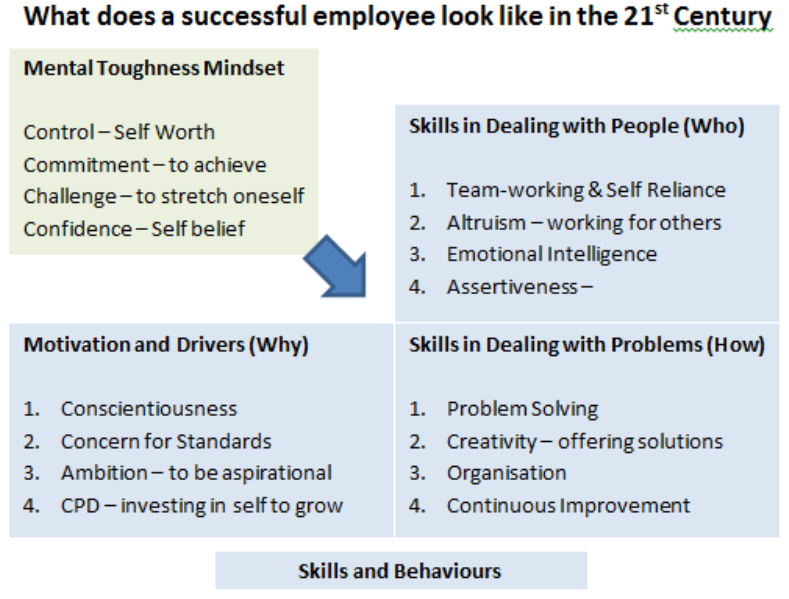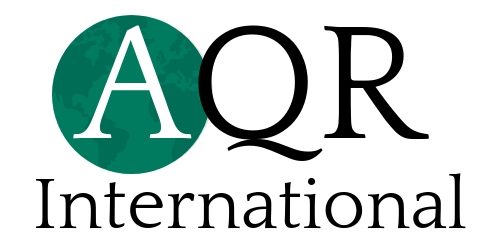One of the greatest challenges for all modern economies is to ensure that as many people as possible in their society are economically active and are contributing to the economic and social development of their society.
This is also true for organisations – their most important resource is people.
And it is important for people too. As Abraham Maslow suggested, personal motivation is often driven by factors such as a sense of belonging, a sense of achievement and a sense of self actualisation – personal growth
For employers the challenge is similar:
- What kind of skills, knowledge and behaviours will we need to be able to run a great organisation and meet the needs of our clients
- To what extent are these in place – what must we do to attend to any gaps – Can we recruit? Can we develop the people we already employ?
- What will this mean for people in our organisation – especially those who aspire to progress with their careers.
In organisations this is often captured in talent management programs.
In the 21st century there are particular implications for each individual too. The most important change for any employee is that what we call jobs are changing rapidly and continuously.
Traditionally career guidance would operate by working with individuals to look at their interests, preferences, skills and knowledge and from that to identify a preferred career. This would be followed by guidance to help individuals understand where those jobs could be found, what were various routes to those jobs, prospects and how the individual might get that job. That will include writing CVs, preparing for interviews, etc.
The problem here is that this no longer works.
Already in the USA it is estimated that 30% of jobs that exist now didn’t exist 10 years ago. Furthermore 30% of jobs that exist now will not exist in 10 years’ time. Most of this change is driven by technology – not just Information Technology but across all sciences and disciplines.
This is crucially important in dynamic, technologically competent economies.
In my own role, 5 years ago I would present at 40 events and conferences every year which involve a lot of travel and take a lot of time. Now I present at around a dozen conferences a year but I present around 40 webinars each year. Some reach 2,500 people each time I present.
I don’t have to travel, I deliver webinars from my office. I reach far more people. No-one has to take time to travel to listen to me. They can do this on their phone, iPad or computer.
So the challenge for individuals and organisations is to consider and in some ways prepare for the widest range of options for jobs and careers and to prepare for changes to the career they have chosen.
It is estimated that, with application and some development, many people can do up to 70% of the jobs in an economy.
This kind of openness to opportunity, flexibility to respond as the world changes and the preparedness to welcome this is valuable for all individuals.
So … Is Career Guidance still important. It is!
We still need to make good decisions about our careers and the jobs we want. We still need to understand what an employer and to apply ourselves to securing those jobs.
But there is more to success than this.
What is happening all over the world is that employers and societies are beginning to understand that employability is more than thinking about skills, knowledge, behaviour and preferences.
It embraces what most call attitude. With a good attitude, an individual can do many jobs and can consider and adopt many careers. This often enables them to take different career paths to their ultimate goal.
This takes Career Guidance to another level – it’s now not only about how to get my next job but it’s about how I can progress successfully in that job and in future jobs I may not yet have considered,
So what does Employability look like?
In 2013 AQR International carried out a study together with key partners from the Careers Guidance industry in the UK where they consulted with almost 500 employers, large and small to identify the qualities that they found to be essential in the very best employees. Although skills, knowledge and qualifications all had their place, the over-riding requirement was for something most called “Attitude”. Employers seemed to value this above all else.
This required further analysis to be able to understand this clearly. The outcome was that a good “Attitude” was, for almost everyone, the combination of a positive mindset and positive behaviours around three core areas. These shown in the image at the top of the post.
Many will recognise the Mindset elements as components of the MTQ48 Mental Toughness model.
The three behavioural components are now embodied into the CARRUS employability model which also has an accompanying measure to assess these qualities in individuals.
Interestingly in 2016, the World Economic Forum published its Future of Jobs Report it forecast that the top ten skills that employees of all types will need by 2020 will be:
They too estimated that five years from now, over one-third of skills (35%) that are considered important in today’s workforce will have changed.
Although this looks at what a successful employee will need from the perspective of their skills, it is not difficult to see the connection between these specific skills and the mindset and behaviours identified in the AQR International study.
Together both studies provide a comprehensive picture of what a highly effective aspirational employee will look like in the very near future.
Doug Strycharczyk is co-author with Charlotte Bosworth of OCR, of “Developing Employability and Enterprise” (Kogan Page 2016. He is CEO for AQR International
Learn more about MTQ48, The Mental Toughness Measure and CARRUS, the employability measure



